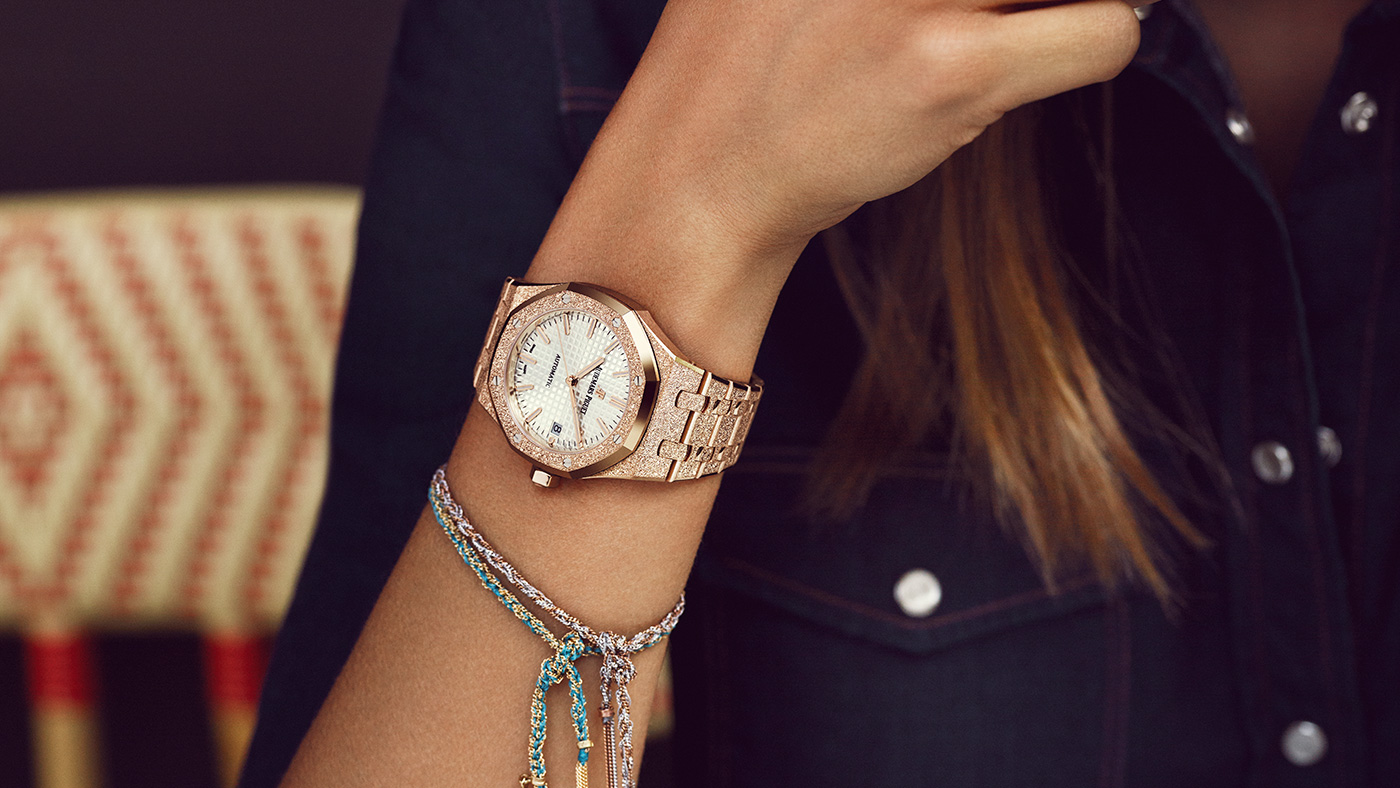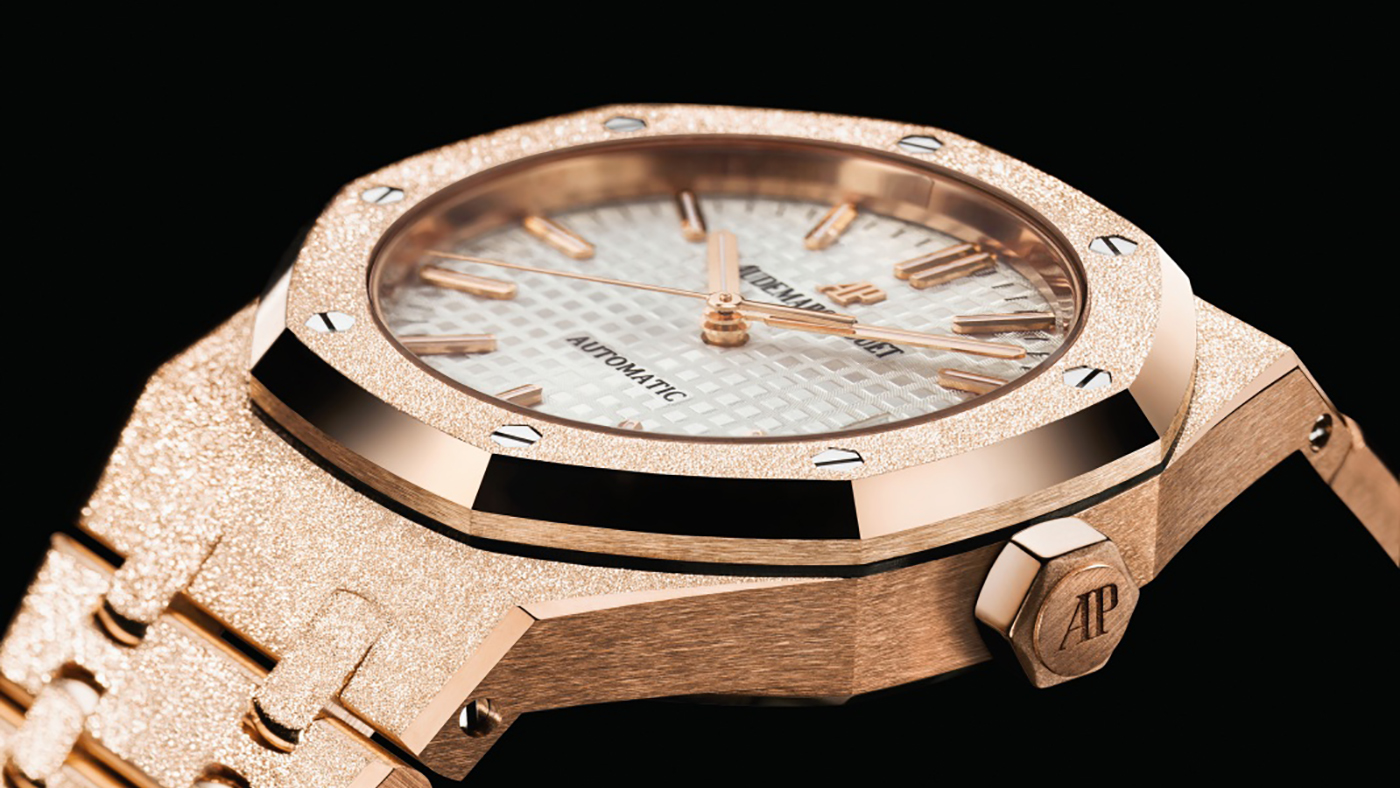Time to shine: The Audemars Piguet Royal Oak Frosted Gold
Designed by jeweller Carolina Bucci, the Swiss watchmaker's latest incarnation of its famous timepiece truly glows

The Patek Philippe Nautilus, the Bulgari Bulgari, the Audemars Piguet Royal Oak – these esteemed timepieces are some of the most recognisable and enduring in horological history, having barely changed since they first launched decades ago. They're all creations of the late legendary designer Gerald Genta, but it is the last one that remains his most defining work.
Widely considered one of the first luxury sports watches, the Royal Oak captivated with its distinctive octagonal bezel and trademark exposed screws and its potential for the women's market was quickly realised - in 1976, just four years after the watch was launched, the brand's head of design, Jacqueline Dimier, chicly reinterpreted the classic shape for smaller wrists.
As the model reaches it 40th anniversary, the Swiss watchmaker has brought on the expertise of jeweller Carolina Bucci for perhaps one of its most eye-catching iterations yet.
The Week
Escape your echo chamber. Get the facts behind the news, plus analysis from multiple perspectives.

Sign up for The Week's Free Newsletters
From our morning news briefing to a weekly Good News Newsletter, get the best of The Week delivered directly to your inbox.
From our morning news briefing to a weekly Good News Newsletter, get the best of The Week delivered directly to your inbox.

"I think it is less common for watches to be designed by women than, say, fashion or jewellery and that was even truer when Jacqueline Dimier designed the first Royal Oak for women," says Bucci. "Everybody knows about the quality and craftsmanship of Audemars Piguet, but perhaps by injecting this feminine sensibility, people see a new side, something a bit more flamboyant and exuberant with just as much attention to detail."
The defining feature of the Royal Oak Frosted Gold is the enthralling sparkle of the case and bracelet, achieved not through hundreds of precious stones but an intricate and time-consuming method of gold hammering called the Florentine technique, which has been used in Bucci's workshops for decades. The gold is beaten with a diamond-tipped tool, creating tiny indentations across the surface that catch the light and completely transforming the final finish of the metal. It took months of trial and error to achieve the desired effect without compromising the clean lines and flexibility of the bracelet.
"When I think about my jewellery, I think about both the wearer and those who will see it being worn," says Bucci. "By treating the finish of the gold with a Florentine effect, you have added nothing to the watch, nor subtracted anything – just altered the surface of the gold to make it sparkle when catching the light. In doing so, the watch becomes something entirely fresh and confident."
A free daily email with the biggest news stories of the day – and the best features from TheWeek.com
-
 Political cartoons for January 4
Political cartoons for January 4Cartoons Sunday's political cartoons include a resolution to learn a new language, and new names in Hades and on battleships
-
 The ultimate films of 2025 by genre
The ultimate films of 2025 by genreThe Week Recommends From comedies to thrillers, documentaries to animations, 2025 featured some unforgettable film moments
-
 Political cartoons for January 3
Political cartoons for January 3Cartoons Saturday's political cartoons include citizen journalists, self-reflective AI, and Donald Trump's transparency